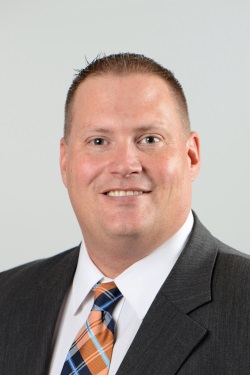TORONTO – November 15 will be an important date in Avaya’s history. On that day Avaya employees, partners and customers will learn the company’s fate as they expect to leave Chapter 11 bankruptcy protection.
New Avaya Canada President David Robertson, in an exclusive interview with ITBusiness, said if all goes well there will be a new structure at Avaya that will see the company become a publicly traded vendor either on the New York Stock Exchange or the NASDAQ. No longer will they be part of an equity ownership. With that the new Avaya will be able to free up roughly $350 million in year one to re-invest in research and development, marketing, a re-branding campaign, enter the cloud market with a new portfolio of solutions, do some debt buy back and have a little money left over for some strategic mergers and acquisitions.

“It’s been a long journey to get here. It’s been like a pendulum but we see light at the end of the tunnel,” Robertson said.
In Canada, Robertson is also working on the subsidiary’s own bit of transformation centered around some key bets on cloud. The company has also approved more headcount; some of which is company from the Avaya Academy.
“We have a good story to tell now. In my view, in 2018 we got a go-to-market strategy, we have an organization around to support that strategy, we have customers, employees and channel partners who have remained loyal to us. I’m also confident that having a flat organizational structure will be a strength as it will make us nimble in the marketplace. I’m excited to get out of Chapter 11 and start re-investing more into the business. This, to me, is a winning recipe for Avaya and a breath of fresh air for all of us. It’s our job now to take this to the customer and educate them,” Robertson said.
After Nov. 15 expect to see a more aggressive sales culture at Avaya Canada, said Greg Schlotzhauer, vice president of sales for Avaya Canada.

What Schlotzhauer has done is increase the number of customer facing reps by 50 per cent. There have also been improvements to Avaya Canada’s technical bench. “We are starting to get more conversations about technology instead of our balance sheet. I do not want to have any more accounting and balance sheet conversations,” he said.
Another interesting wrinkle in the development of the new sales culture at Avaya comes down from newly crowned CEO Jim Chirico. Robertson said that sales will be able to make their own decisions and when something works it will be celebrated throughout the company. And, in those cases when something does not work, they will try to fix it. What Chirico intends to do is go away from the escalation culture of approval, Avaya has had in the past.
“To me this feels like a start-up mentality. We are going to try, fail, learn and celebrate the success. We need to get bold and aggressive. We have the technology, but we’ve been on the defensive because of Chapter 11. Now we can go on the offense,” Schlotzhauer said.
And, while Avaya will still be a networking and collaborations vendor expect the new Avaya to become a software player too. Software already represents between 75 to 80 per cent of revenue, while the rest is in hardware. Robertson said it can get higher.
In terms of Avaya’s cloud strategy, the company will have Zang Office, which came from Esna Technologies deal. Zang will be owned by Avaya but run independently. Channel Partners will be able to offer both Zang Office and Cloud Powered By Avaya offerings as well. Zang can also connect to Cisco and Mitel equipment.
Zang Office is a pay-as-you-go service that can be connected in five minutes.
Meanwhile, Powered By Avaya is a cloud version of IP Office and will be offered in a consumption model with contracts ranging from one to three years. This offering can include solution such as unified communications, disaster recovery, call control, contact center, UCaaS and CCaaS.
Avaya has teamed up with AWS and Google for the back-end cloud on these offerings. The company is taking an agnostic approach to cloud providers. It currently does not support Microsoft Azure, but it is on its road map.
The process for the Nov. 15th ruling will involve three groups: a secured line of credit, an unsecured line of credit from the Plan Support Agreement with debt holders and the U.S. Pension Benefit Guaranty Corp. Avaya has agreements in place with each group and they have been submitted to the court. There will be proxy votes with all three. On Nov. 15 the results of the voting are being revealed to the judge and from there a deal is struck and Avaya can exit Chapter 11. After Nov. 15, the company will need a few weeks to process the deal and start rolling out its strategy.





